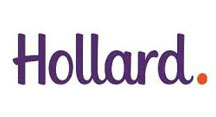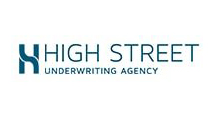What is OHS Risk Management?*
Occupational Health and Safety (OHS) risk management is a formal process for identifying workplace hazards and analysing the risks associated with those hazards.
You may find this article helpful in planning to protect the safety, health, and well-being of your employees, contractors, visitors, and anyone else visiting and interacting with the business.
Why is OHS Risk Management Important for Australian Businesses?*
OHS risk management is essential for Australian businesses as it enables them to operate safely and comply with legal requirements.
Effective OHS risk management may reduce costs associated with workplace injuries while promoting a safer, more efficient work environment. Also, proper OHS risk management can help businesses avoid legal and financial penalties associated with non-compliance.
By proactively addressing potential hazards and implementing robust safety measures, businesses can reduce the likelihood of accidents and incidents, safeguarding their operations. Also consider public liability insurance to help safeguard your business against unexpected issues that may arise.
What are the Legal Requirements for OHS Risk Management in Australia?*
In Australia, OHS risk management is governed by the Work Health and Safety (WHS) Act and Regulations.
You must implement health and safety practices as soon as you start your business. Under Australian WHS laws, your business is required to:
- Ensure the health and safety of your workers.
- Not put the health and safety of others at risk.
To achieve this, you must:
- Provide a safe work environment.
- Provide and maintain safe machinery and structures.
- Establish safe work practices.
- Ensure the safe use, handling, and storage of machinery, structures, and substances.
- Provide and maintain adequate facilities.
- Supply necessary information, training, instruction, or supervision for safety.
- Monitor the health of workers and conditions at the workplace.
How to Conduct an OHS Risk Assessment?*
Eliminating all risks is the most effective control measure to ensure a safe workplace. However, if elimination isn’t possible, you must minimise the risks as is reasonably practical.
You are required to conduct an OHS risk assessment if you are:
- A person conducting a business or undertaking (PCBU)
- A designer, manufacturer, importer, supplier, or installer of plant, substances, or structures
- An officer, such as a company director
Managing risks involves a step-by-step process: identifying hazards, assessing risks, controlling risks, and reviewing control measures.
Effective risk management enables you to adapt to changes and enhance your business. By eliminating and controlling workplace risks, you can:
- Prevent workplace injuries and illnesses
- Improve the health, well-being, and capability of your workers
- Enhance the quality and productivity of work.
What are the Steps Involved in an OHS Risk Assessment?*
To minimise or eliminate hazards in the workplace, you need first to know what they are. An OHS risk assessment can be conducted to do this.
These are the steps involved in an OHS risk assessment:
- Identify Hazards
Identify potential sources of harm in your workplace.
- Assess Risks
Conduct a risk assessment to evaluate the likelihood and severity of harm. This helps determine the effectiveness of current controls and the actions needed.
- Control Risks
Aim to eliminate risks. If complete elimination is impossible, minimise them using the hierarchy of control measures to manage risks effectively.
- Review Control Measures
Regularly review your control measures to ensure that your control measures are effective. Adjust when needed.
Consult with workers and their health and safety officers at each step, as their insights are valuable in managing both physical and psychological risks in the workplace.
What are the Key Elements of an OHS Risk Management Plan?*
- Hazard Identification and Assessment
Routinely identify and evaluate potential hazards in the workplace. Some hazards will be obvious while others may take more effort to be identified. Safe Work Australia advises consulting with workers and systematically analysing each task they perform, along with the tools they use. Encourage employees to report any hazards they encounter. Ensure you have an effective incident report form in place for employees to fill out and be sure to follow up on all incidents.
- Risk Control Measures
Implement effective control measures to eliminate or minimise each identified hazard. This may include substituting a hazard with a safer alternative, isolating the hazard, or applying engineering or administrative controls to mitigate the risk.
- Emergency Response Plan
Develop a procedure to respond to emergencies, including an emergency action plan, continuity plan, evacuation plan and first aid arrangements.
- Training and Education
Provide employees with the tools, knowledge and skills necessary to perform their work safely, including training on specific hazards and safe work practices. Safe Work Australia provides numerous education and training resources for businesses to support their efforts in creating a safe workplace.
What are Some Common OHS Risks in Australian Businesses?*
Workplace risks can vary widely depending on the industry, but some common hazards for Australian businesses include:
Chemicals and Fumes: Exposure to hazardous chemicals, such as those used in cleaning or manufacturing, poses significant risks. For example, those who work in a transport business face potential harm when refuelling trucks as well as those who work in agriculture when handling pesticides and fertilisers. To mitigate this, workers could wear appropriate protective clothing to reduce exposure, use proper handling techniques, and ensure their working area is well-ventilated.
Physical Discomfort and Fatigue: Long hours in uncomfortable seating or repetitive tasks can lead to physical strain and fatigue. This can occur in office jobs where employees are sitting for extended periods, or, in hospital settings where nurses are on their feet for several hours a day. In these instances, taking regular breaks to stretch and walk around, along with adhering to legal working hours, can help reduce these risks.
Environmental Hazards: Lack of proper climate control, such as heating or air-conditioning, can affect worker comfort and health, especially in extreme weather conditions. Installing fans or air-conditioning in vehicles or workspaces and ensuring workers have suitable clothing and hydration can help address these issues.
Psychological Hazards: Mental health risks, such as stress from heavy workloads or bullying and harassment, are just as important to manage. Regular consultation with workers, fostering a supportive work environment, and providing access to mental health resources are key steps in mitigating these risks.
Ergonomic Risks: Poorly designed workspaces, seating, or tools can lead to ergonomic issues, causing strain or injury over time. Ensuring that workplaces are equipped with ergonomic tools and furniture and providing training on the correct use of equipment can help prevent these hazards.
What are Some Strategies for Managing OHS Risks in Australian Businesses?*
- Implementing Safety Policies and Procedures
Train staff in safe work procedures for reporting incidents and provide a positive and respectful work culture. You should also provide training and supervision so your workers know how to do their work safely.
- Regular Safety Inspections and Audits
Regular safety audits and inspections can identify hazards in the workplace, any processes that expose workers to harmful substances, or environments that pose physical risks. By performing these audits, you can address and mitigate these issues, enhancing the safety and protection of your workers.
- Providing Adequate Training and Resources
To promote a safe and secure workplace environment, it’s essential to provide training that educates workers on appropriate safety procedures and the information they need to carry out their work safely. This training should cover potential hazards, emergency plans/protocols, and the correct use of safety equipment. Additionally, providing accessible resources such as manuals, safety guidelines, protective equipment, and ongoing support, ensures that employees are well-informed and prepared to handle their responsibilities while maintaining a safe working environment.
- Encouraging Employee Participation and Reporting
For an OHS program to be effective, it must involve the active participation of workers and their representatives. Worker participation involves engaging all employees, including contractors, subcontractors, and temporary staff. To ensure successful participation and reporting, the program should encourage workers to contribute and feel safe when raising safety or health concerns. It should also provide workers with access to the necessary resources to participate effectively.
How to Monitor and Review OHS Risk Management Strategies?*
Managing and improving OHS risk management needs to be an ongoing process. Regularly monitoring and reviewing your approach to health and safety helps ensure its effectiveness and relevance as your workplace grows and evolves.
Some strategies employers can use to monitor and review OHS risk management strategies include:
- Monitoring and reviewing the Safe Work Australia safety checklist
- Regularly review your OHS risk management plan
- Make any necessary adjustments to keep your management plan up to date
- Consistently inform, train, and supervise your employees to reinforce safe procedures
- Conduct regular safety audits and inspections
- Collect input from employees regarding safety concerns and promptly follow up on them
- Consistently compare your OHS practices with industry standards to ensure best practices and implement any improvements
Public Liability Insurance may help protect your business. Speak to our public liability insurance brokers to get a better understanding of the cover available.
The content of this blog article is intended for general informational purposes only and should not be considered as professional advice. While we strive to ensure accuracy, we make no guarantees about the completeness or reliability of the information. For personalized guidance regarding insurance matters, we recommend consulting with a qualified professional. Any actions you take based on any information provided here is at your own discretion.





